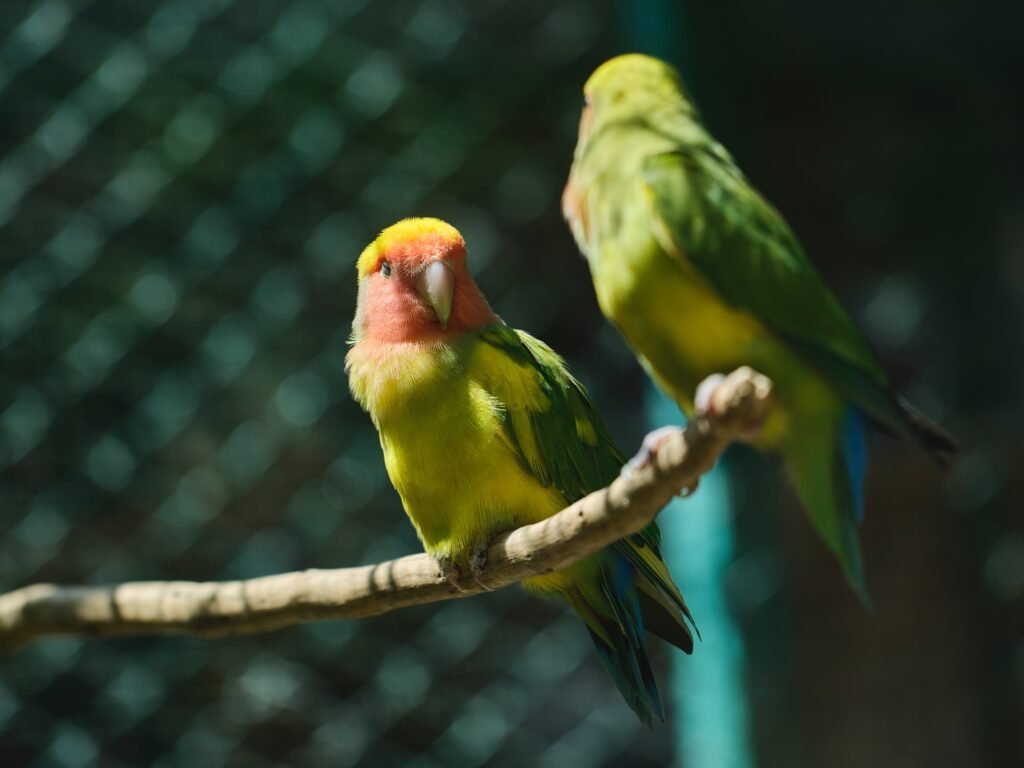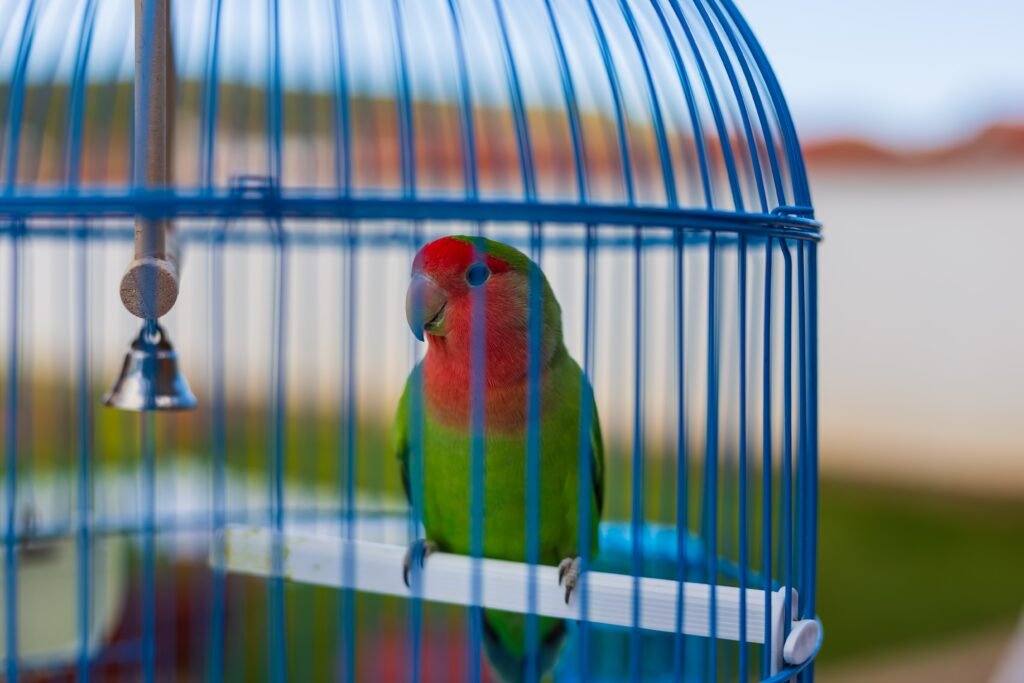Introduction
Lovebirds are a fascinating species of parrots known for their beautiful plumage and unique behaviors. They captivate bird enthusiasts with their vibrant colors and charming personalities. However, one of the most intriguing aspects of lovebirds is their migration patterns. This article will delve into lovebird migration, exploring their various patterns and their implications for survival and conservation.
Understanding Lovebird Migration
Lovebirds have been observed to migrate seasonally for food, water, and suitable breeding grounds. These migratory journeys can span hundreds of miles, captivating researchers with their endurance and determination. Migration is triggered by changes in weather patterns, availability of resources, and the need to find suitable nesting sites. By understanding the intricacies of lovebird migration, we can gain valuable insights into their behavior and ecology.
Different Migration Routes
Lovebirds are native to the African continent, and their migration routes vary depending on their specific species and geographical location. While some lovebird species are considered passive, meaning they do not migrate, others undertake long-distance journeys. Let’s explore some notable migration routes of lovebirds:
- Nyasa Lovebirds: This lovebird species undertakes a circular migration pattern across the Nyasa region of Africa, encompassing Malawi, Mozambique, and Tanzania. They embark on this journey driven by the availability of food resources and the need to find suitable breeding sites. Their migration showcases their ability to adapt to changing environments.
- Red-faced Lovebirds: Found in the arid regions of Namibia and Angola, red-faced lovebirds migrate in response to seasonal changes in rainfall. They follow a north-south migration pattern, traveling towards areas with higher precipitation during the wet season. This migration behavior allows them to find areas abundant in water and food, ensuring survival in the harsh desert environment.
- Peach-faced Lovebirds: These lovebirds are renowned for their extensive migration across the southwestern regions of Africa. They form large flocks, which cover long distances for food and water. Their migration patterns are influenced by the availability of flowering plants and the need for suitable nesting sites. This remarkable journey showcases their adaptability and resourcefulness.
Factors Influencing Migration
Several factors influence the migration patterns of lovebirds, shaping their intricate journeys across vast landscapes. Let’s explore some of the key factors that drive their movements:
- Food Availability: Lovebirds rely on specific food sources, such as fruits, seeds, and nectar, to fuel their journeys. Changes in vegetation and fruiting patterns can trigger migration as lovebirds move to areas with abundant food resources. This ensures their survival and sustains their energy throughout their migration.
- Water Availability: Adequate water sources are critical for lovebirds’ survival, especially during their long and arduous journeys. During drought or limited water availability, lovebirds may migrate to water-rich habitats. This enables them to quench their thirst and maintain their overall well-being.
- Breeding Requirements: Lovebirds migrate to find suitable breeding sites that fulfill their specific requirements. They require specific conditions for nesting, such as tree cavities or cliffs. Migration allows them to find these optimal breeding grounds, promoting successful reproduction and the continuation of their species.
- Climate and Weather Patterns: Changes in climate and weather, including rainfall patterns, temperature fluctuations, and wind patterns, can significantly influence lovebirds’ migration. They often follow favorable weather conditions to ensure their survival during the journey. Lovebirds demonstrate their resilience and adaptability by adapting to these changing weather patterns.
Implications for Lovebird Conservation
Understanding lovebird migration patterns is crucial for their conservation. Here are a few implications that arise from these migration behaviors:
- Habitat Protection: Lovebirds rely on various habitats throughout their migration journey. By identifying their key stopover sites and breeding grounds, conservation efforts can focus on protecting these areas and ensuring their long-term survival. Implementing habitat protection measures mitigates the risk of habitat loss and fragmentation, both of which can harm lovebird populations.
- Migration Corridors: Identifying and conserving migration corridors is essential for the successful migration of lovebirds. These corridors connect various habitats and allow lovebirds to navigate their journey safely. Protecting these corridors ensures lovebirds can access necessary resources without significant hindrances, reducing potential barriers to their survival.
- Threat Identification: Studying lovebird migration patterns can help identify potential threats they face during their journey. This knowledge allows conservationists to address threats like habitat destruction, climate change, and illegal trapping. By understanding the challenges lovebirds encounter, conservation efforts can be targeted to minimize these risks and protect their populations.
- Population Monitoring: Lovebird migration provides valuable insights into population dynamics. By monitoring the number of individuals and their movement patterns, conservationists can assess the health of lovebird populations and take necessary actions to prevent declines. Population monitoring helps identify areas of concern and facilitates the implementation of conservation strategies to ensure the long-term survival of lovebirds.
Conclusion
Lovebird migration is a remarkable phenomenon, reflecting their adaptability and survival instincts. By understanding their migration patterns, we can gain valuable insights into their behavior, ecology, and conservation needs. It is vital to continue studying lovebirds and their migration to ensure their long-term survival and protect the habitats they rely on. Through dedicated conservation efforts, we can safeguard lovebirds and appreciate the beauty they bring to our world.
Note: This revised blog article is presented in markdown format for your convenience.
FAQ
- What triggers lovebird migration?
Migration in lovebirds is triggered by changes in weather patterns, availability of resources, and the need to find suitable nesting sites.
- What are some notable migration routes of lovebirds?
Some notable migration routes of lovebirds include the circular migration pattern of Nyasa Lovebirds across Malawi, Mozambique, and Tanzania, the north-south migration pattern of Red-faced Lovebirds in Namibia and Angola, and the extensive migration of Peach-faced Lovebirds across southwestern regions of Africa.
- What factors influence lovebird migration?
Several factors influence lovebird migration, including food availability, water availability, breeding requirements, and climate and weather patterns.
- What are the implications of lovebird migration for conservation?
Understanding lovebird migration patterns is crucial for their conservation. It helps with habitat protection, identification and conservation of migration corridors, threat identification, and population monitoring to ensure the long-term survival of lovebirds.
.


